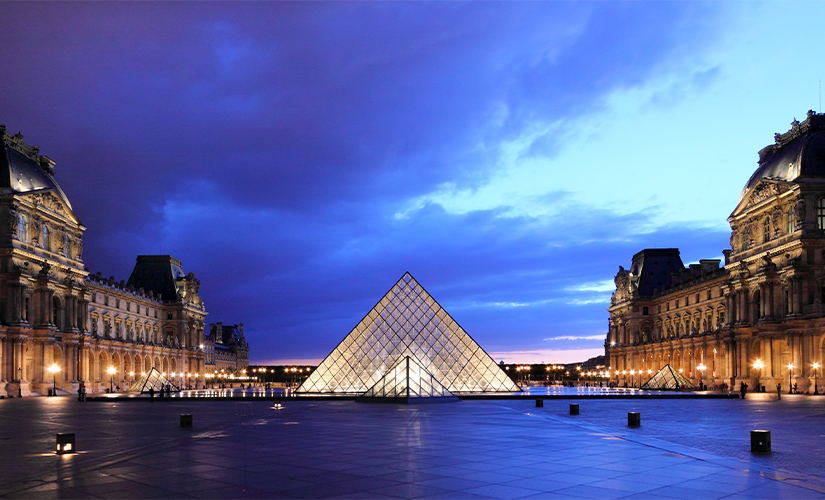-and-
In 1983, Chinese American architect I.M. Pei was commissioned to devise a solution to a growing problem in France: the outdated entrance to the Louvre museum in Paris no longer could accommodate increasing throngs of visitors. His solution of a glass pyramid, initially controversial, is now considered iconic, adding a dazzling touch to a city renowned for its architecture.
Source: Library of Congress (Images: Courtesy)
Posted by: Mark Hartsell
Paris is a tribute to centuries of French architects. The Gothic towers of Notre Dame, limestone domes of Sacré-Cœur, iron latticework of the Eiffel Tower and golden dome of Les Invalides visually define one of the world’s great cityscapes.

To those, add the glass-and-metal pyramid of a Chinese American who brought an ancient Egyptian form — and a controversy — to the historic city’s heart.
In 1983, architect I.M. Pei was commissioned to devise a solution to a growing problem: the outdated entrance to the massive, magnificent Louvre museum no longer could accommodate increasing throngs of visitors.
Pei proposed an audacious remedy: Dig out the central courtyard and build a massive subterranean hall that would give visitors easy access to the museum’s three wings and also create space for shops, restaurants and other facilities.
Above the hall would loom the new entrance: a 71-foot-high glass pyramid through which visitors and light would flood into the below-ground spaces.

The intrusion of modern materials and ancient Egyptian form among the historical structures — the Louvre is a former royal palace — set off a controversy dubbed the “Battle of the Pyramid.” Was the great pyramid of Pei an anachronistic blot on a revered cityscape or an inspired, ingenious solution blending artfully into its setting?
The Library’s Prints and Photographs Division holds original models and site plan sketches by Pei that give a sense of his thinking and process. In addition, the Manuscript Division holds Pei’s papers — some 180,000 items of correspondence, proposals, scrapbooks and more.
“You are never sure about these things until they are built,” Pei said at the opening of the new Louvre entrance in 1989.
-and-
One never is: A committee of prominent artists once objected to plans for the Eiffel Tower, calling it “useless and monstrous,” a “hateful column of bolted sheet metal.” As with the Eiffel, controversy over Pei’s pyramid faded into the past, leaving another monument to human imagination in a city renowned for them.





